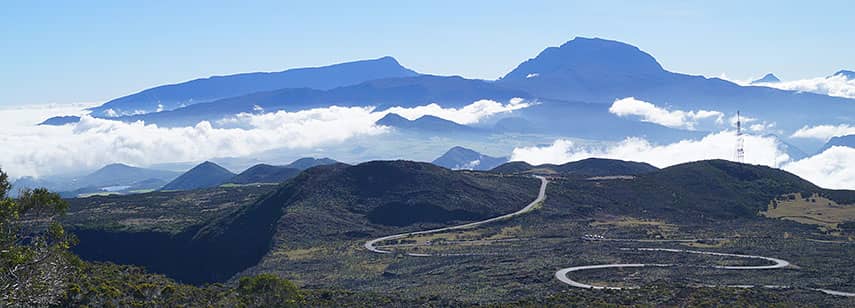Discovering Reunion Island: A Tropical Paradise
Reunion Island, known for its breathtaking landscapes and vibrant culture, is an overseas department of France. This stunning island, once referred to as Île Bourbon, sits among the Mascarene Islands in the Indian Ocean. Located 740 km (460 mi) east of Madagascar and approximately 180 km (115 mi) south west of Mauritius, Reunion Island boasts a unique charm. Its volcanic origins have shaped a mountainous terrain, stretching about 70.5 km (43.8 mi) from northwest to southeast and roughly 50 km (31 mi) wide.
Population and Culture of Reunion Island
As of 2014, the island is home to around 845,000 inhabitants. The capital, Saint-Denis, serves as the administrative center. Many languages are spoken here, with French taking precedence as the official language. Meanwhile, Réunion Creole holds a significant place in daily conversations. The island's vibrant culture reflects its rich history, shaped by diverse influences over centuries.
A Brief History of Reunion Island
Historically, Arab sailors identified this enchanting location as Dina Morgabin, meaning "Western Island." The island first caught the attention of the Portuguese, who encountered its uninhabited shores in 1513. They named it Santa Apollonia. During the 17th to 19th centuries, a wave of immigration radically transformed Reunion Island's demographic landscape. French settlers, along with Africans, Chinese, Malays, and Malabar Indians, contributed to its current ethnic mixture.
The Suez Canal's opening in 1869 affected the island's role as a vital stop on the East Indies trade route, yet its historical significance remains impressive.
Geography and Climate of Reunion Island
Reunion Island’s geography presents a diverse and striking environment. This island, situated west of southern Africa in the picturesque Indian Ocean, covers an area of 2,510 km² (969 sq. mi.). The terrain primarily consists of mountainous regions, though fertile lowlands along the coast offer a stark contrast. The highest peak, Piton des Neiges, rises majestically to 3,069 meters.
The climate on Reunion Island exhibits tropical characteristics; however, the temperature can vary significantly at different elevations. From November to April, residents and visitors experience hot and rainy weather. In contrast, the period from May to November delivers cooler and drier conditions.
Demographics and Society
Reunion Island prides itself on its multicultural society. The people, known as Reunionese, belong to various ethnic backgrounds, including French, African, Malagasy, Chinese, Pakistani, and Indian. As of 2009, the population stands at approximately 816,000, representing a rich tapestry of cultures and traditions.
The island enjoys a predominantly Roman Catholic population at 86%, alongside communities practicing Hinduism, Islam, and Buddhism. Additionally, the literacy rate is impressively high at around 90%, showcasing the value placed on education.
Natural Resources and Agriculture
Reunion Island boasts an abundance of natural resources. The surrounding ocean teems with fish, and ample arable land promotes agriculture. The island has harnessed its hydropower potential to further support its economy. Key agricultural products include sugarcane, vanilla, tobacco, tropical fruits, vegetables, and corn, showcasing the island's agricultural versatility.
Industries of Reunion Island
The economy of Reunion Island thrives on several key industries. Sugar production stands as a cornerstone of the agricultural sector, along with the rum industry and the manufacturing of cigarettes. Additionally, the island's artisans produce diverse handicraft items that reflect local culture. The extraction of flower oil also contributes to the economic framework, alongside the burgeoning tourism sector.
Export and Import Partners
Reunion Island's economy heavily relies on France as its primary trading partner, accounting for a significant 74% of its exports. Other partners include Japan and Comoros, marking notable percentages. On the import side, France again leads, providing 64% of imports. Other notable partners include Bahrain, Germany, and Italy, each contributing around 3%.
Conclusion: Experience the Allure of Reunion Island
In conclusion, Reunion Island captivates with its stunning landscapes, a vibrant mix of cultures, and a rich history. The island provides a unique blend of natural beauty, delectable cuisine, and warm hospitality. Whether you are a thrill-seeker or a relaxation enthusiast, Reunion Island offers something for everyone. With various activities like hiking, diving, and cultural experiences, visitors are sure to create lasting memories on this remarkable island.
Largest cities of: Reunion Island
| City Name | Population | Year of foundation | |
| Saint-Denis | 150,000 | 1669 | |
| Saint-Paul | 100,000 | 1665 | |
| Saint-Pierre | 85,000 | 1669 | |
| Le Tampon | 82,000 | 1848 | |
| Saint-Louis | 70,000 | 1665 | |
| La Possession | 62,000 | 1865 | |
| Saint-André | 50,000 | 1748 | |
| Sainte-Marie | 42,000 | 1665 |


